Podcast: Play in new window | Download
Subscribe: Apple Podcasts | RSS
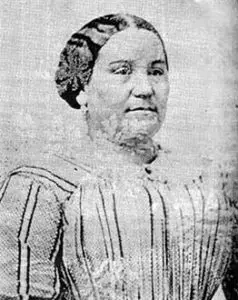 The year was 1802. In a far-flung province of the Spanish Empire called Alta California in the Presidio of Santa Barbara a little girl was born. Her name was María Bernarda Ruíz Lugo. Her father was a Spanish military officer who was stationed at the Santa Barbara presidio and her mother hailed from the relatively new California landed aristocracy. Her mother’s parents, members of the powerful Lugo family, had been granted tens of thousands of acres by the Spanish king in what is now some of the most expensive areas to buy property in the United States: the present-day counties of Santa Barbara, Ventura and Los Angeles. It is often difficult to imagine a California in Bernarda’s early days. It was not yet the United States, it was not yet Mexico. Spain was busy quarrelling with Napoleon in Europe and fighting off and on with the British. Even though the Spanish Empire had once ruled the seas and had conquered some of the greatest civilizations on earth, by the early 1800s it had become worn down and its foundation had begun to crack. Its domestic problems were exacerbated by grumblings throughout their many colonies, from Asia to the Americas, by people who wanted more rights or more political autonomy. By the time of Bernarda’s birth many believed that the Spanish Empire would not be able to hold on for much longer. In this declining empire’s remote backwater called California, its Spanish inhabitants called Californios, although loosely governed by military outposts and under various degrees of clerical supervision, were mostly left to themselves. Most of the members of California’s various indigenous communities lived settled lives in the Spanish mission system, and many still held on to their pre-European ways of life away from the Spanish settlements. The California coast attracted Russian fur trappers, Yankee trading vessels, English pirates and an assortment of miscreants from all parts of the world. Local landowning families had a great deal of informal political power and influence in the late 18th and early 19th Centuries. The young Bernarda would grow up in the prosperous and independently minded world of the Spanish California landed gentry. As a young girl she had no idea of the history she would witness or what amount of that history she would help shape.
The year was 1802. In a far-flung province of the Spanish Empire called Alta California in the Presidio of Santa Barbara a little girl was born. Her name was María Bernarda Ruíz Lugo. Her father was a Spanish military officer who was stationed at the Santa Barbara presidio and her mother hailed from the relatively new California landed aristocracy. Her mother’s parents, members of the powerful Lugo family, had been granted tens of thousands of acres by the Spanish king in what is now some of the most expensive areas to buy property in the United States: the present-day counties of Santa Barbara, Ventura and Los Angeles. It is often difficult to imagine a California in Bernarda’s early days. It was not yet the United States, it was not yet Mexico. Spain was busy quarrelling with Napoleon in Europe and fighting off and on with the British. Even though the Spanish Empire had once ruled the seas and had conquered some of the greatest civilizations on earth, by the early 1800s it had become worn down and its foundation had begun to crack. Its domestic problems were exacerbated by grumblings throughout their many colonies, from Asia to the Americas, by people who wanted more rights or more political autonomy. By the time of Bernarda’s birth many believed that the Spanish Empire would not be able to hold on for much longer. In this declining empire’s remote backwater called California, its Spanish inhabitants called Californios, although loosely governed by military outposts and under various degrees of clerical supervision, were mostly left to themselves. Most of the members of California’s various indigenous communities lived settled lives in the Spanish mission system, and many still held on to their pre-European ways of life away from the Spanish settlements. The California coast attracted Russian fur trappers, Yankee trading vessels, English pirates and an assortment of miscreants from all parts of the world. Local landowning families had a great deal of informal political power and influence in the late 18th and early 19th Centuries. The young Bernarda would grow up in the prosperous and independently minded world of the Spanish California landed gentry. As a young girl she had no idea of the history she would witness or what amount of that history she would help shape.
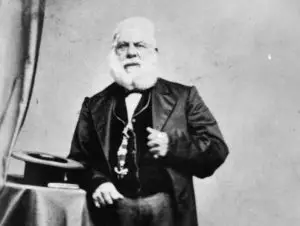 By the time Bernarda was 8 years old, the persistent colonial grumblings turned into the Mexican War of Independence from Spain. By 1821, the Viceroyalty of New Spain, with Alta California as its most northwestern province became the independent nation of Mexico. By that time Bernarda was 19 and had been married for almost 4 years to a wealthy Californio only known to history by his last name of Rodríguez. After bearing him 9 children Doña Bernarda became a widow and took on the added responsibilities of running the family businesses. Principal among these businesses was an express mail service that linked California to Mexico City through Santa Barbara and Los Angeles. Just 5 years after Mexican independence, a man by the name of Jedidiah Smith became the first American to make it to California by an overland route. Many more would soon follow. The central government in Mexico City felt almost the same way about California as the Spanish. It was far away, remote, and was hard to manage from such a long distance. The Mexicans were aware that foreign powers coveted the province, especially Russia, Great Britain and France and to a lesser degree the United States which had only been an independent nation for a few decades. They were also aware that if vast tracts of land were left unoccupied they might be perceived as being ripe for the taking. To deal with the California population issue, Mexico City was eager to grant all newcomers to California ample rights to land along with citizenship if they pledged allegiance to the new nation of Mexico. As a result of this the population of California increased and by 1840 over 20% of the non-Indian inhabitants were foreigners. With the foreigners came an influx of new political ideas and philosophies that countered the status quo the independently-minded Californios had grown accustomed to. At the same time, the Californians had begun to view Mexico City’s involvement in their affairs as quite meddlesome. An example of this intrusion occurred in 1834 when the nation of Mexico declared all Catholic missions in California to be federal property. In spite of the meddling from a faraway central authority, Californios under Mexican rule had enjoyed a small degree of political autonomy by the 1840s. The governor of California was elected by the Alta California popular assembly instead of being appointed by the central government thousands of miles away. By the middle of the 1840s, when Doña Bernarda had established herself as an educated middle-aged matriarch, Californios had raised their own army and had kicked out the Mexican federales. The doña’s 4 eldest sons belonged to the California militia groups. The high degree of autonomy enjoyed by this rebel province would be short lived, as the Americans were coming.
By the time Bernarda was 8 years old, the persistent colonial grumblings turned into the Mexican War of Independence from Spain. By 1821, the Viceroyalty of New Spain, with Alta California as its most northwestern province became the independent nation of Mexico. By that time Bernarda was 19 and had been married for almost 4 years to a wealthy Californio only known to history by his last name of Rodríguez. After bearing him 9 children Doña Bernarda became a widow and took on the added responsibilities of running the family businesses. Principal among these businesses was an express mail service that linked California to Mexico City through Santa Barbara and Los Angeles. Just 5 years after Mexican independence, a man by the name of Jedidiah Smith became the first American to make it to California by an overland route. Many more would soon follow. The central government in Mexico City felt almost the same way about California as the Spanish. It was far away, remote, and was hard to manage from such a long distance. The Mexicans were aware that foreign powers coveted the province, especially Russia, Great Britain and France and to a lesser degree the United States which had only been an independent nation for a few decades. They were also aware that if vast tracts of land were left unoccupied they might be perceived as being ripe for the taking. To deal with the California population issue, Mexico City was eager to grant all newcomers to California ample rights to land along with citizenship if they pledged allegiance to the new nation of Mexico. As a result of this the population of California increased and by 1840 over 20% of the non-Indian inhabitants were foreigners. With the foreigners came an influx of new political ideas and philosophies that countered the status quo the independently-minded Californios had grown accustomed to. At the same time, the Californians had begun to view Mexico City’s involvement in their affairs as quite meddlesome. An example of this intrusion occurred in 1834 when the nation of Mexico declared all Catholic missions in California to be federal property. In spite of the meddling from a faraway central authority, Californios under Mexican rule had enjoyed a small degree of political autonomy by the 1840s. The governor of California was elected by the Alta California popular assembly instead of being appointed by the central government thousands of miles away. By the middle of the 1840s, when Doña Bernarda had established herself as an educated middle-aged matriarch, Californios had raised their own army and had kicked out the Mexican federales. The doña’s 4 eldest sons belonged to the California militia groups. The high degree of autonomy enjoyed by this rebel province would be short lived, as the Americans were coming.
In 1846, in the wake of the American annexation of the Republic of Texas the year before, hostilities increased between the United States and Mexico. The Mexicans never recognized the independence of Texas and with the annexation came a border dispute. Both Mexico and the US claimed the land between the Nueces River and the Rio Grande and when an offer made to Mexico to purchase the disputed land was rejected, the newly elected American president, James Polk, sent Major General Zachary Taylor to occupy the disputed territory. The Mexicans burned an American fort on the Rio Grande only after they attacked Taylor’s force, killing a dozen men and capturing over 50. Two days after President Polk’s message to Congress calling for war with Mexico, the United States Congress approved the declaration of war. The date was May 23, 1846.
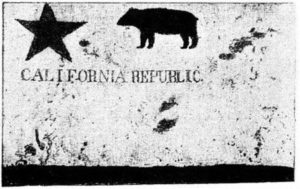 In California the war took an altogether different turn. As previously mentioned, there was already unrest in this faraway Mexican province. According to the history books, word of the war with Mexico took three months to get to California, the region’s inhabitants only finding out about the conflict in August of 1846. Perhaps with information ahead of everyone else, on June 14th 1846 a group of 30 Americans attacked the Mexican barracks at Sonoma, took it over, hoisted a flag with a bear on it and proclaimed California to be an independent country, the “California Republic.” No government was formally organized and this event has gone down in California folklore and serves to motivate modern-day California secessionists. As the war became known on the Pacific Coast, and direct orders from Washington were issued for California, the Americans mobilized in a more organized fashion. The Mexican inhabitants had mixed thoughts about the war after it got underway. The governor of Alta California, Pío Pico, had openly expressed his support for California to become a colony of the British Empire and was prepared to swear his allegiance to Queen Victoria. Others welcomed the Americans and saw their possible occupation as a temporary thing, and one step closer to true independence. Still others vowed to fight for their land against all invaders and would do anything to repel the foreigners whether they be Russian, British, French, American or the out-of-touch bureaucrats and politicians from Mexico City. One thing was certain: As war loomed, Doña Bernarda saw the world around her changing once again and she was concerned about her sons who were eager to fight.
In California the war took an altogether different turn. As previously mentioned, there was already unrest in this faraway Mexican province. According to the history books, word of the war with Mexico took three months to get to California, the region’s inhabitants only finding out about the conflict in August of 1846. Perhaps with information ahead of everyone else, on June 14th 1846 a group of 30 Americans attacked the Mexican barracks at Sonoma, took it over, hoisted a flag with a bear on it and proclaimed California to be an independent country, the “California Republic.” No government was formally organized and this event has gone down in California folklore and serves to motivate modern-day California secessionists. As the war became known on the Pacific Coast, and direct orders from Washington were issued for California, the Americans mobilized in a more organized fashion. The Mexican inhabitants had mixed thoughts about the war after it got underway. The governor of Alta California, Pío Pico, had openly expressed his support for California to become a colony of the British Empire and was prepared to swear his allegiance to Queen Victoria. Others welcomed the Americans and saw their possible occupation as a temporary thing, and one step closer to true independence. Still others vowed to fight for their land against all invaders and would do anything to repel the foreigners whether they be Russian, British, French, American or the out-of-touch bureaucrats and politicians from Mexico City. One thing was certain: As war loomed, Doña Bernarda saw the world around her changing once again and she was concerned about her sons who were eager to fight.
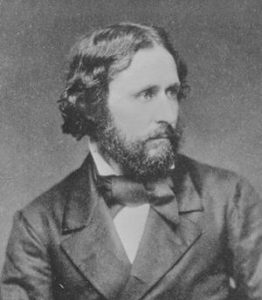 The three major American players in the Mexican War in California were Stephen Kearny, Commodore Robert Stockton and John C. Frémont. Kearny and Stockton were cut from the same cloth. Both were seen as by-the-book ruthless military commanders. Kearny had hoisted the American flag at Santa Fe, the capital of the Mexican province of New Mexico, and with 100 men he marched across the deserts to join the fighting in California. Stockton commanded 3 naval vessels and his 650-man fighting force, comprised mostly of US Marines, Navy men and militiamen, was the largest American ground force in California. Stockton ordered Frémont to put together a force of 100 men to join with his forces. Frémont had stopped over in California after surveying newly acquired American lands in the West with the US Army Corps of Topographical Engineers and his being in California at the time was pure coincidence. Frémont’s scraggly force of surveyors were joined by some 60 other men and later 150 others who had been sympathetic to the Bear Flag Revolt. The somewhat flamboyant and agreeable Frémont had very little trouble attracting future fighters who would follow him, and as mentioned earlier, he was not as strictly military minded as Stockton or Kearny. After a few months of mostly token resistance, the combined forces of Stockton and Frémont easily controlled the northern part of what is now the state of California. The Mexican capital at the Pueblo of Los Angeles was the true prize and all forces were directed to head south.
The three major American players in the Mexican War in California were Stephen Kearny, Commodore Robert Stockton and John C. Frémont. Kearny and Stockton were cut from the same cloth. Both were seen as by-the-book ruthless military commanders. Kearny had hoisted the American flag at Santa Fe, the capital of the Mexican province of New Mexico, and with 100 men he marched across the deserts to join the fighting in California. Stockton commanded 3 naval vessels and his 650-man fighting force, comprised mostly of US Marines, Navy men and militiamen, was the largest American ground force in California. Stockton ordered Frémont to put together a force of 100 men to join with his forces. Frémont had stopped over in California after surveying newly acquired American lands in the West with the US Army Corps of Topographical Engineers and his being in California at the time was pure coincidence. Frémont’s scraggly force of surveyors were joined by some 60 other men and later 150 others who had been sympathetic to the Bear Flag Revolt. The somewhat flamboyant and agreeable Frémont had very little trouble attracting future fighters who would follow him, and as mentioned earlier, he was not as strictly military minded as Stockton or Kearny. After a few months of mostly token resistance, the combined forces of Stockton and Frémont easily controlled the northern part of what is now the state of California. The Mexican capital at the Pueblo of Los Angeles was the true prize and all forces were directed to head south.
By the end of 1846 Doña Bernarda had seen the handwriting on the wall and had a strong feeling that California would become part of the permanent territory of the United States. She was well connected with all of the established families in what is now the counties of Santa Barbara, Ventura and Los Angeles. Her family’s express mail service kept her on top of news of the war and other valuable information. She had several concerns about her future. What would happen to her sons who were involved in the fighting? What would happen to the Californios under Yankee rule? What would become of her own property, wealth and status? She had grave concerns as the Americans came closer to her home town of Santa Barbara.
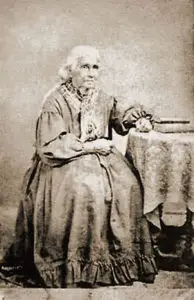 At San Luís Obispo the forces under Frémont captured José de Jesus Pico who was cousin to the Mexican governor of Alta California, Pío Pico. José was sympathetic to the Americans and told Frémont he would help him in his campaign heading south. By the time Frémont got to Santa Barbara it was the week after Christmas of 1846. His troops were weary and he needed fresh horses. Frémont commandeered all of the horses in Doña Bernarda’s corrals that were used in her express mail business. The Americans took over Santa Barbara without firing a shot, as the sleepy town of 900 was relatively defenseless. As the doña was well connected and well respected among the Californio families of influence, she approached José Pico and asked him if she could have 10 minutes of Lieutenant Colonel Frémont’s time. The American forces were staying at the San Carlos Hotel which was within walking distance of her home. Frémont, a fluent Spanish speaker, agreed to the private meeting. The 10 minutes that the doña had asked for turned into 2 hours. During the time she had the “ear of the emperor” Doña Bernarda appealed to Frémont’s ego and ambition and voiced her concerns and spoke on behalf of the Californio families in her circle. Did Frémont have political ambitions in what would be the new US territory of California? She could help him secure his political future. Doña Bernarda felt like she could work with Frémont, who she saw as an officer and a gentleman and a stark contrast to the more bellicose Stockton and Kearny, to come to some sort of peaceful end to the hostilities. In their conversation she told the American that Californios would gladly lay down their arms and submit to the Americans peacefully provided that the United States would honor certain conditions. There were rumors coming from the Stockton and Kearny camps that all Mexicans involved in fighting against the Americans would be shot and their property taken away. The doña wanted the Americans to grant clemency to all those involved in the fighting for a guarantee that all fighting would cease. Additionally, she wanted equal status given to the conquered people of California; that they would become full American citizens with equal rights and equal protection under the American legal system. The last thing she emphasized was the respect for property, that all current property granted by the Spanish Crown or the Mexican government, including grants to indigenous groups, would be honored by the new American government. What Doña Bernarda wanted a peaceful and seamless transition to her new overlords that would minimize loss of life and would have the least possible impact in the status quo. Frémont was not only sympathetic to what Doña Bernarda was saying, it became the foundation for the peace treaty signed to end the Mexican War in California called the Treaty of Capitulation or the Treaty of Cahuenga, and later became the basis for the grander Treaty of Guadalupe Hidalgo that formally ended the Mexican War a few years later. From his own memoirs we see what Frémont thought of this Mexican matriarch:
At San Luís Obispo the forces under Frémont captured José de Jesus Pico who was cousin to the Mexican governor of Alta California, Pío Pico. José was sympathetic to the Americans and told Frémont he would help him in his campaign heading south. By the time Frémont got to Santa Barbara it was the week after Christmas of 1846. His troops were weary and he needed fresh horses. Frémont commandeered all of the horses in Doña Bernarda’s corrals that were used in her express mail business. The Americans took over Santa Barbara without firing a shot, as the sleepy town of 900 was relatively defenseless. As the doña was well connected and well respected among the Californio families of influence, she approached José Pico and asked him if she could have 10 minutes of Lieutenant Colonel Frémont’s time. The American forces were staying at the San Carlos Hotel which was within walking distance of her home. Frémont, a fluent Spanish speaker, agreed to the private meeting. The 10 minutes that the doña had asked for turned into 2 hours. During the time she had the “ear of the emperor” Doña Bernarda appealed to Frémont’s ego and ambition and voiced her concerns and spoke on behalf of the Californio families in her circle. Did Frémont have political ambitions in what would be the new US territory of California? She could help him secure his political future. Doña Bernarda felt like she could work with Frémont, who she saw as an officer and a gentleman and a stark contrast to the more bellicose Stockton and Kearny, to come to some sort of peaceful end to the hostilities. In their conversation she told the American that Californios would gladly lay down their arms and submit to the Americans peacefully provided that the United States would honor certain conditions. There were rumors coming from the Stockton and Kearny camps that all Mexicans involved in fighting against the Americans would be shot and their property taken away. The doña wanted the Americans to grant clemency to all those involved in the fighting for a guarantee that all fighting would cease. Additionally, she wanted equal status given to the conquered people of California; that they would become full American citizens with equal rights and equal protection under the American legal system. The last thing she emphasized was the respect for property, that all current property granted by the Spanish Crown or the Mexican government, including grants to indigenous groups, would be honored by the new American government. What Doña Bernarda wanted a peaceful and seamless transition to her new overlords that would minimize loss of life and would have the least possible impact in the status quo. Frémont was not only sympathetic to what Doña Bernarda was saying, it became the foundation for the peace treaty signed to end the Mexican War in California called the Treaty of Capitulation or the Treaty of Cahuenga, and later became the basis for the grander Treaty of Guadalupe Hidalgo that formally ended the Mexican War a few years later. From his own memoirs we see what Frémont thought of this Mexican matriarch:
“And she wished me to take into my mind this plan of settlement, to which she would influence her people; meantime, she urged me to hold my hand, so far as possible. Naturally, her character and sound reasoning had its influence with me, and I had no reserves when I assured her I would bear her wishes in mind when the occasion came, and that she might with all confidence speak on this basis with her friends.”
The doña did speak with her friends and one person of note whom she told of her meeting with Frémont was Andrés Pico, the younger brother of former governor Pio Pico, who put him in charge of California while he left to make an appeal to the federal authorities to send more Mexican troops to support the war in the province. As the person in charge, Doña Bernarda urged Andrés Pico to meet with Frémont to sign a capitulation treaty. He agreed to do so.
While writing about the days of the treaty, Frémont also said about Doña Bernarda: “I found that her object was to use her influence to put an end to the war, and to do so upon such just and friendly terms of compromise as would make the peace acceptable and enduring.”
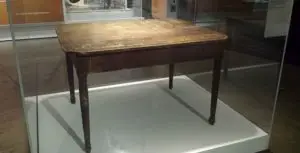 Doña Bernarda accompanied Frémont to a small rancho near modern-day Universal Studios to witness the signing of the capitulation treaty that she had a major hand in authoring and brokering. The day was January 13, 1847 and it was pouring rain. The house at the rancho was abandoned and from out of the kitchen the signers of the treaty took a small wooden table to sign the documents on. Doña Bernarda and other influential Californios stood under the porch and witnessed the peaceful transfer of power to the Americans. At the end of the day, in accordance with the treaty, Frémont even returned Doña Bernarda’s horses to her. She was allowed to keep her properties and businesses and her family flourished under the new regime enjoying the rights and privileges she had secured in her fateful two hour meeting with Frémont. John C. Frémont amassed great wealth during the California Gold Rush and with the alliances he had made with the Californios starting in that Santa Barbara hotel, Frémont realized his political career, becoming one of the first two US senators from the new state of California in 1850 and later the Republican Party’s nominee for President of the United States in 1856. Doña Bernarda Ruíz de Rodríguez who was born a subject of the Spanish crown, became a Mexican citizen and then proudly became an American, died peacefully in her Santa Barbara home in 1880 at the age of 78.
Doña Bernarda accompanied Frémont to a small rancho near modern-day Universal Studios to witness the signing of the capitulation treaty that she had a major hand in authoring and brokering. The day was January 13, 1847 and it was pouring rain. The house at the rancho was abandoned and from out of the kitchen the signers of the treaty took a small wooden table to sign the documents on. Doña Bernarda and other influential Californios stood under the porch and witnessed the peaceful transfer of power to the Americans. At the end of the day, in accordance with the treaty, Frémont even returned Doña Bernarda’s horses to her. She was allowed to keep her properties and businesses and her family flourished under the new regime enjoying the rights and privileges she had secured in her fateful two hour meeting with Frémont. John C. Frémont amassed great wealth during the California Gold Rush and with the alliances he had made with the Californios starting in that Santa Barbara hotel, Frémont realized his political career, becoming one of the first two US senators from the new state of California in 1850 and later the Republican Party’s nominee for President of the United States in 1856. Doña Bernarda Ruíz de Rodríguez who was born a subject of the Spanish crown, became a Mexican citizen and then proudly became an American, died peacefully in her Santa Barbara home in 1880 at the age of 78.
The table on which the Treaty of Cahuenga was signed is now in the Natural History Museum of Los Angeles County, safely protected under glass and illuminated with a bright light. While it really didn’t belong to Doña Bernarda, and she didn’t have a seat at it either literally or figuratively, what was done on that kitchen table on that rainy day in California back in January of 1847 was the doña’s doing. That was her treaty. That was her moment. And that was her table.
REFERENCES USED (This is not a formal bibliography)
A History of California: Extended History of its Southern Coast Counties by J. M. Guinn
“How did the Mexican-American War in California Actually End?” article by D.J. Waldie on the KCET web site
The web site of the Campo de Cahuenga Historical Site
Various land-grant and other historical sources found in the California History collection of the San Diego Public Library

2 thoughts on “Doña Bernarda’s Kitchen Table”
Very interesting history lesson Robert. I ‘ll be reading more of your blogs.
Thanks Fred! Sit back and listen (if you can tolerate my voice!). 🙂